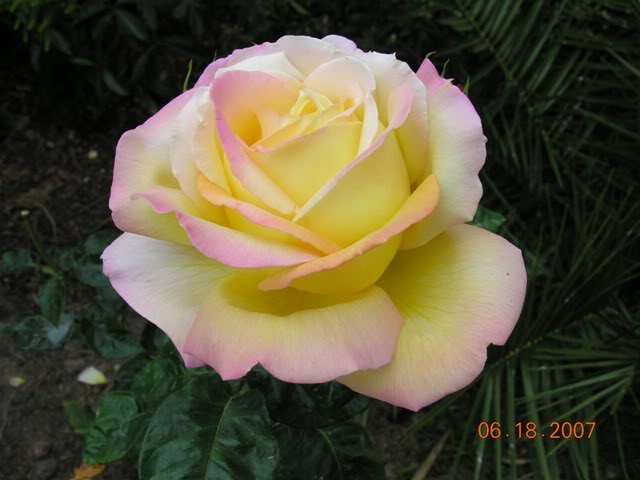 |
| One gardener tried to root out Trailing Arbutus, a fragrant and difficult flower to grow. He was shocked when he found out that what he deplored was not a weed. The often-deplored Dandelion is an herb. |
 |
| Trailing Arbutus |
The Dandelion has to be the greatest plant the lawn and garden industry ever exploited. No matter how many tons of broadleaf weed-killer they sell, the herbs brought over by the colonists still prosper.
- The flowers can be made into wine.
- The seed fluff is used by birds for their nests.
- The leaves make the most nutritious salad, and
- The roots can be used as a coffee substitute.
- 25 calories
- 42 milligrams of sodium
- 218 milligrams of potassium
- 5 grams of carbohydrates
- 7 percent dietary fiber
- 535 percent vitamin K
- 111 percent vitamin A
- 32 percent vitamin C
- 5 percent vitamin B6
- 10 percent calcium
- 9 percent iron
- 5 percent magnesium
As everyone knows, the energy of plants comes from the sun, and that radiant energy is quite intense on every square inch it touches. Plants convert that solar energy, using nutrition from the soil, and grow tall, wide, and deep. Corn and sunflowers are very efficient in converting solar power, and they also require plenty of water and soil nutrition. Their extensive root systems have a powerful effect on the soil.
Break Up the Soil
One benefit of deplorable plants is their ability to break up and fertilize the soil. Dandelions have multiple tap roots, which reach deep into the soil. That is good for clay soil (like mine) or sandy soil. They serve as handy earthworm elevators. If any reader doubts this, pull a dandelion after a long rain. An earthworm is often wrapped around the taproots.
Earthworms do not digest food - they shred and swallow it. Bacteria in their gut digests the food. Their tiny kidneys give up nitrogen compounds into the soil while the earthworm deposits castings. Those casts are collections of various nutrients multiplied by this digestive system. Besides, the earthworm excretes a usable calcium (unlike eggshells) to sweeten the soil.
The earthworm loves the Dandelion, and the herb loves the earthworm. They feed each other. Both plant and worm develop the organics in the soil, which go down dramatically in chemical-sprayed, rototilled land.
Hold the Soil in Place
If anyone doubts the holding power of weeds, new trees, and unwanted plants, bend over and try to uproot them, even after a big storm. Some seem welded to the center of the earth. Maples are especially quick to root and hold on.
The seemingly innocent periwinkle, which grows slowly in the shade, has roots like steel wire and do a marvelous job of holding slopes together, which is why they are used to landscape new slopes.
Each Plant a Center of Biological Influence
Whatever the plant, its growth initiates a series of environmental changes.
Roots are impressive for improving the soil, but the interactions at the root hairs are even more so. The tiny root hairs are the links in a network with soil microbes, chiefly the fungi. That is why new plants from the garden center are wobbly in the soil, then fastened to the earth. Roots grow miles of root hairs and carry out great exchanges.
As noted before in many posts, the presence of single plant energizes bacteria, protozoa, nematodes, springtails, earthworms, pill bugs, sow bugs, spiders, bees, wasps, and hover flies.
A really useful plant - the Dandelion - sheds leaves all the time. The leaves feed earthworms, bacteria, and mites alike. Some creatures shred material. Some digest organics. They all work with each other, so a pile of leaves is reduced not only by earthworms, but also by mites (spider family). Any respectable leaf pile will be cooking up fungi and bacteria, and various composting creatures will join the feast.
When I think of tree leaves, I remember that the gardening experts of the past sniffed about their high carbon content - plus minerals. The composters wanted green leaves high in nitrogen. But all of them are valuable.
Can this impossibly complex series of dependencies - that work without our help and even in spite of hour help - be accidental?
The best support for evolution comes from ignorance. There are more springtails on earth than people, yet very few gardeners knows what a springtail does. Some wrote not long ago, "I never heard of them before your post."
One value of writing about a variety of topics is the need for additional study, so I am always adding to my reading lists and videos. Regenerative farming is high on the list now, because farmers are slowing turning the tide against a perverse reliance on bad solutions.
Mrs. Ichabod brought a stunning Peace rose to her cancer support group. One person said, "Doesn't he have to spray a lot?" She said, "No sprays. No toxins. No chemical fertilizer." Some of them are reading Creation Gardening. Others are reading Angel Joy. I was impressed that the Peace rose was so large and boasting such a strong stem. The rose is almost knee-deep in last year's tree leaves, which harbor pirate bugs. I saw those little black specks on the roses as soon as buds formed. Pirate bugs love (to eat) aphids.


